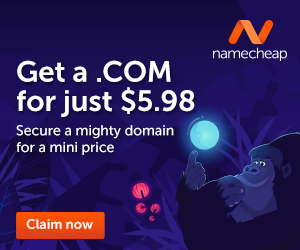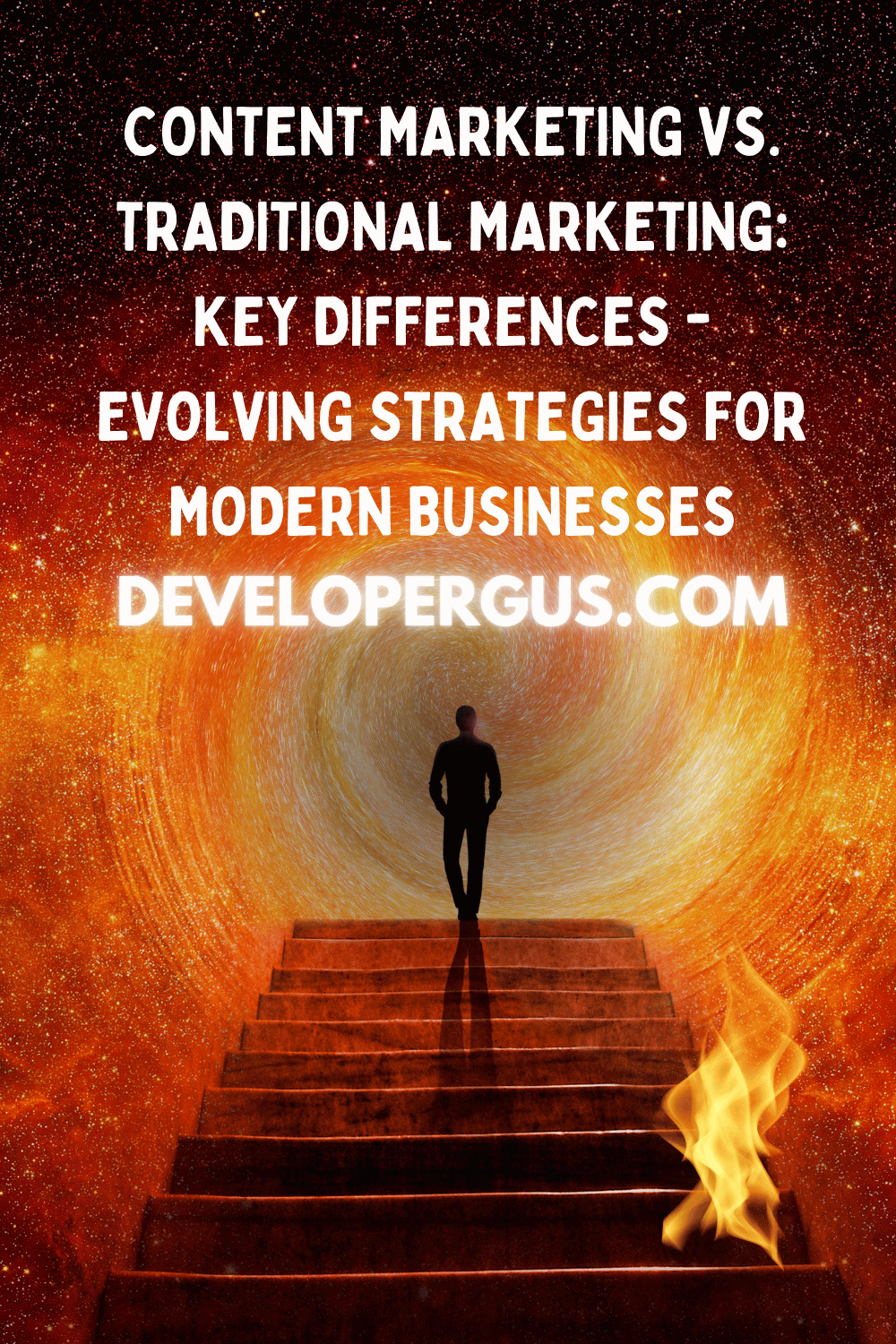As a marketer, I’ve seen firsthand how the landscape has shifted in recent years. The rise of digital platforms has transformed how businesses connect with their audience. This shift has brought content marketing to the forefront, challenging traditional marketing methods.

Content marketing focuses on creating and sharing valuable, relevant content to attract and retain a clearly defined audience, while traditional marketing relies on direct promotional messages to reach potential customers. This fundamental difference impacts everything from costs and measurability to audience engagement and long-term effectiveness.
I’ve found that understanding these key differences is crucial for businesses looking to optimize their marketing strategies. By examining the unique strengths and limitations of both approaches, companies can make informed decisions about where to allocate their resources for maximum impact. Let’s explore the main distinctions between content marketing and traditional marketing to help you determine which approach aligns best with your goals.
Defining Content Marketing and Traditional Marketing
Content marketing and traditional marketing represent two distinct approaches to reaching and engaging audiences. While both aim to promote products or services, they differ significantly in their methods, channels, and overall philosophy.
What Is Content Marketing?
Content marketing focuses on creating and distributing valuable, relevant content to attract and retain a clearly defined audience. I use this strategy to build trust and establish authority in my field. My goal is to provide useful information that addresses my audience’s needs and interests.
Content marketing typically includes:
- Blog posts
- Videos
- Podcasts
- Infographics
- Social media content
I aim to educate and inform rather than directly sell. This approach is based on “permission”, where I encourage people to come to me for information. By consistently delivering high-quality content, I can build long-term relationships with my audience.
What Is Traditional Marketing
Traditional marketing relies on more conventional methods to promote products or services directly to potential customers. I use this approach when I want to reach a broad audience quickly or reinforce my brand message through repetition.
Common traditional marketing tactics include:
- TV and radio ads
- Print advertisements
- Billboards
- Direct mail campaigns
- Telemarketing
This method is often described as “interruption-based” marketing. I aim to capture attention by placing my message where my target audience is likely to see or hear it. Traditional marketing tends to be more product-focused and emphasizes immediate sales or brand awareness.
Core Differences Between Content and Traditional Marketing
Content marketing and traditional marketing differ significantly in their approach, channels, and success metrics. These differences shape how businesses interact with their audience and measure campaign effectiveness.
Engagement Strategy
Content marketing focuses on providing value to the audience through informative and relevant material. I create content that addresses customer pain points and interests, aiming to build trust and establish authority. This approach is based on “permission”, inviting people to seek out information voluntarily.
Traditional marketing, in contrast, relies on direct promotion of products or services. I use techniques like advertising and sales pitches to capture attention. This method is often described as “interruption-based”, as it aims to insert marketing messages into the audience’s daily activities.
The goal of content marketing is to educate and engage, while traditional marketing primarily seeks to persuade and sell.
Distribution Channels
Content marketing leverages digital platforms extensively. I utilize channels such as:
- Blogs and websites
- Social media platforms
- Email newsletters
- Podcasts
- Video sharing sites
These channels allow for targeted distribution and easy sharing of content.
Traditional marketing employs more conventional media:
- Television and radio ads
- Print advertisements (newspapers, magazines)
- Billboards and outdoor signage
- Direct mail campaigns
These channels often have a broader reach but less precise targeting capabilities.
Measurement of Success
In content marketing, I track metrics that indicate audience engagement and long-term relationship building:
- Website traffic and time on page
- Social media shares and comments
- Email open and click-through rates
- Lead generation and conversion rates
- Customer retention and loyalty
Traditional marketing success is often measured by immediate sales impact:
- Sales volume increases
- Return on ad spend (ROAS)
- Brand awareness and recall
- Foot traffic to physical stores
Content marketing metrics tend to focus on audience behavior and interaction, while traditional marketing emphasizes direct sales impact and brand visibility.
Benefits of Content Marketing
Content marketing offers several advantages that can significantly impact a business’s success and growth. It provides cost-effective strategies, delivers long-term value, and enhances online visibility.
Cost-Effectiveness
Content marketing costs 62% less than traditional marketing while generating about 3 times as many leads. I find this cost-efficiency particularly appealing for businesses with limited marketing budgets.
Unlike traditional advertising, which often requires substantial upfront costs, content marketing allows for more gradual investment. I can create and distribute valuable content without the need for expensive ad space or production costs.
This approach enables me to allocate resources more effectively, focusing on creating high-quality content that resonates with my target audience. By providing valuable information, I can attract and engage potential customers at a fraction of the cost of traditional marketing methods.
Long-Term Value
Content marketing builds trust and long-term relationships with customers. I’ve observed that the value of content extends far beyond its initial publication date.
By consistently providing helpful and relevant information, I establish my brand as a trusted authority in my industry. This trust translates into increased customer loyalty and repeat business.
Unlike traditional ads that quickly become outdated, well-crafted content remains valuable over time. I can repurpose and update my content to maintain its relevance, maximizing its long-term impact.
Additionally, content marketing supports both B2B and B2C audiences, allowing me to cater to diverse customer bases effectively.
SEO and Online Visibility
Content marketing significantly boosts my online visibility through improved search engine optimization (SEO). By creating high-quality, relevant content, I increase my chances of ranking higher in search engine results pages.
This SEO-driven strategy cultivates visitors and leads to lasting customers over the long term. As I produce more content, I create more opportunities for my target audience to find me organically.
I’ve found that content marketing attracts customers who are actively seeking information related to my products or services. This targeted approach results in more qualified leads and higher conversion rates.
Moreover, content marketing increases my chances of “going viral” as readers share valuable content within their networks, further expanding my reach and visibility.
Challenges of Traditional Marketing

Traditional marketing faces several significant hurdles in today’s rapidly evolving business landscape. These challenges impact effectiveness, budget allocation, and overall campaign success.
Higher Costs
Traditional marketing methods often come with hefty price tags. TV commercials, print ads, and billboards require substantial upfront investments. I’ve seen small businesses struggle to afford prime-time TV slots or full-page magazine spreads.
Production costs for high-quality print materials or video advertisements can quickly add up. Ongoing expenses for maintaining visibility through repeated airings or publications further strain marketing budgets.
Content marketing costs 62% less than traditional marketing, making it a more budget-friendly option for many businesses.
Difficulty in Tracking ROI
Measuring the return on investment (ROI) for traditional marketing campaigns can be challenging. I find it hard to directly attribute sales or leads to specific traditional marketing efforts.
Print ads and billboards don’t provide real-time data on viewer engagement. It’s difficult to determine how many people actually saw a TV commercial or listened to a radio ad.
This lack of precise tracking makes it challenging to optimize campaigns and justify marketing spend. Businesses may struggle to identify which elements of their traditional marketing mix are most effective.
Market Saturation
Traditional marketing channels are often oversaturated, making it difficult for individual messages to stand out. I’ve noticed that consumers are bombarded with advertisements daily, leading to ad fatigue and reduced effectiveness.
TV commercials compete for attention during limited ad breaks. Print publications are filled with competing advertisements, diminishing the impact of each individual ad.
This saturation can lead to diminishing returns on marketing investments. Businesses may need to increase spending just to maintain the same level of visibility and impact in crowded traditional marketing spaces.
Blending Content and Traditional Marketing for Optimal Results

I believe the most effective marketing strategies combine elements of both content and traditional marketing. This integrated approach allows businesses to leverage the strengths of each method.
Content marketing builds trust and long-term relationships with customers. It attracts people seeking reliable information and can generate ongoing organic traffic.
Traditional marketing excels at broad brand awareness and direct promotion. It’s effective for reaching large audiences quickly through channels like TV, radio, and print.
To blend these approaches:
- Create valuable content that aligns with traditional ad campaigns
- Use traditional channels to promote content pieces
- Repurpose content for traditional media formats
- Integrate consistent messaging across all platforms
A balanced strategy might look like this:
| Content Marketing | Traditional Marketing |
|---|---|
| Blog posts | TV commercials |
| Social media | Print ads |
| Podcasts | Billboards |
| Video tutorials | Radio spots |
By combining these tactics, I can reach a wider audience while providing value at every touchpoint. This approach maximizes the impact of marketing efforts and creates a cohesive brand experience for customers.








Comments (2684)